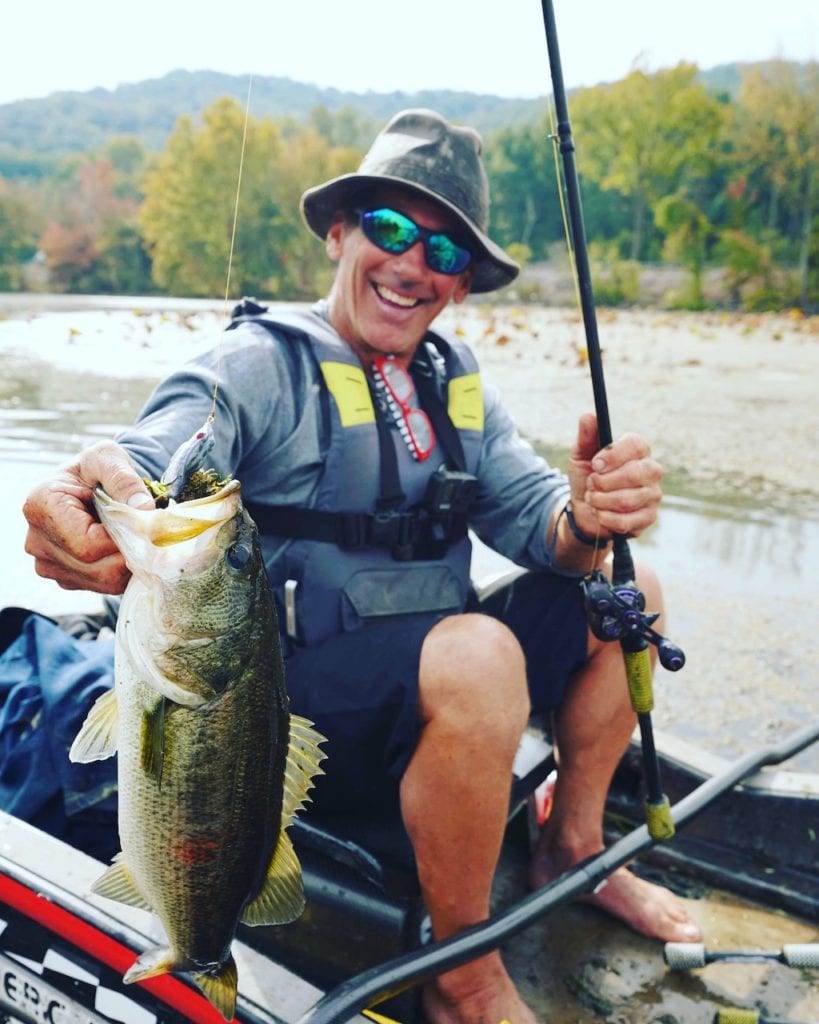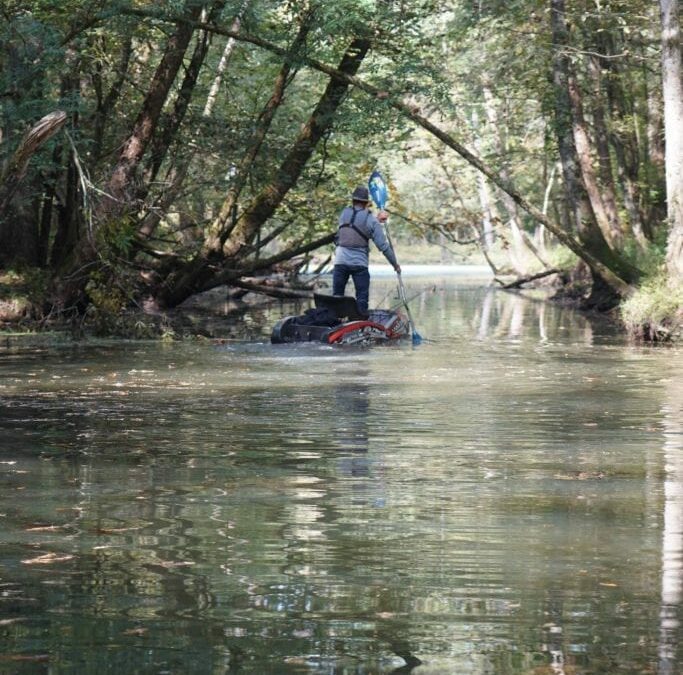Story and photos by Brad Weigmann
How far would you go up a reservoir to catch a bass? Would you go up until your trolling motor hits bottom or your skeg on your boat is dragging in the mud? Is the risk of getting run aground worth the reward of unpressured, hungry bass that will bite any lure cast near them?
One angler that constantly searches for bass in unpressured water is Eric Jackson. EJ is a professional tournament bass angler not only in a bass boat, but in a kayak. Of course his kayak is unique from all other kayaks, but we’ll get to that later.
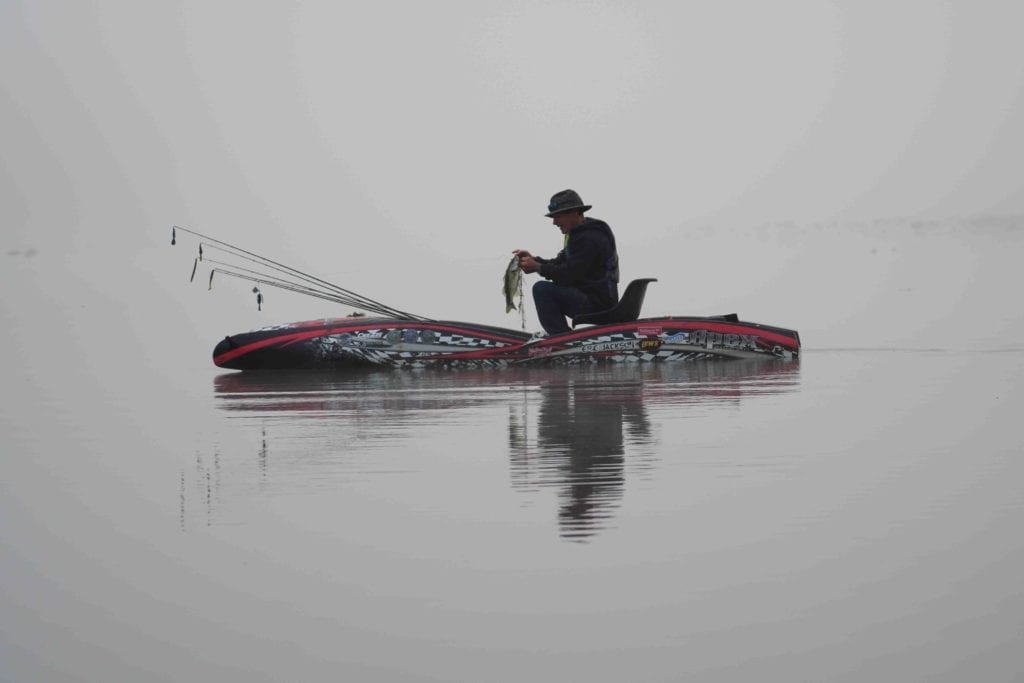
EJ uses several techniques when searching for shallow water. One that has proven productive over the years is Google Earth. EJ noted that it’s amazing to see how much information is available just by going to Google Earth on a computer or cell phone.
“Fish in unpressured water are easier to catch because they don’t have as many angler trying to catch them, haven been caught lately or even seen a lure in awhile. Obviously kayaks have an advantage over bass boats in getting to unpressured water. Like right here on Lake Guntersville you don’t see any bass boats way up the feeder creek on the flats because it’s so thick of lily pads, hydrilla, coontails and milfoil they can’t get around,” said EJ.
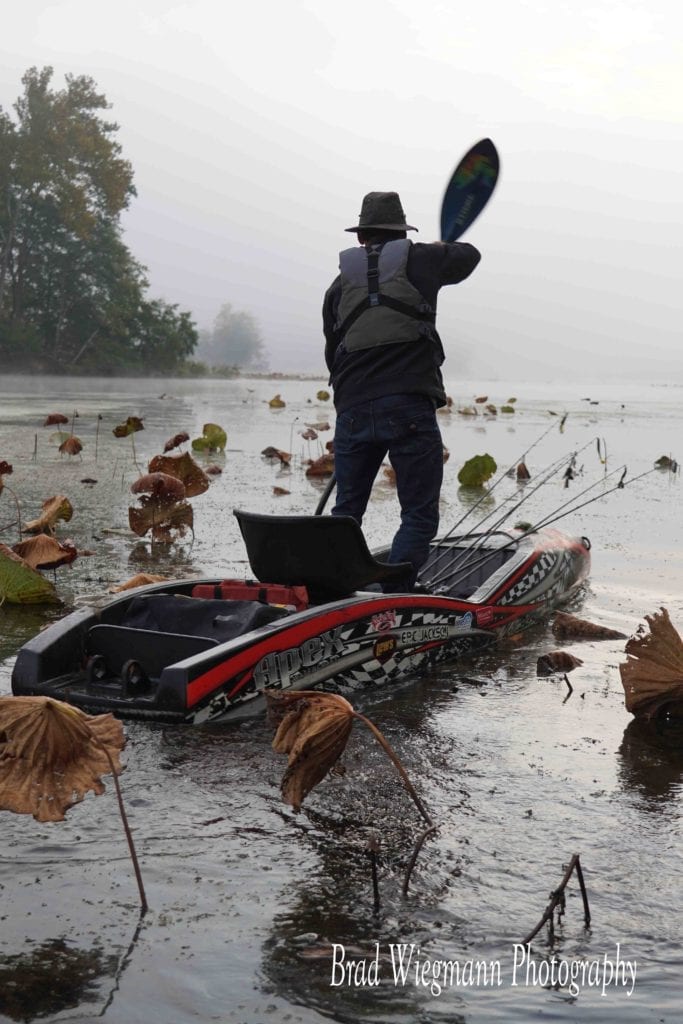
He noted that just because you are in a kayak that doesn’t mean you are fishing in unpressured water. A kayak angler has to be creative in where they launch to fish. Anglers then have to find their way around and upstream to even more secluded water where there is a healthy population of bass.
Recently on Lake Guntersville in Alabama, EJ was fishing a kayak bass fishing tournament and decided that they would be a healthy population of big bass in the North Saulty creek. “I found a launch area for my kayak, but I’m still going to paddle a couple miles upstream in search of unpressured bass. Truth is I will even go up pass where most kayaks can’t get to find unpressured bass,” said EJ.

His strategy for the tournament is to stay in the North Saulty area and fishing the wood and aquatic vegetation located in the deeper water. Of course deep may only 2- to 3-feet in some places, however, holes or ditches will also have bass in them.
“Only Lake Guntersville there are 20 some creeks like this one. Is this the best one? I have no idea, but it is a good one. I know I can catch fish up there,” said EJ.
Not surprisingly EJ love of kayak fishing has lead him to develop a number of features now commonly found in most fishing kayaks like an elevated seat. Nevertheless, EJ’s newest project is taking kayak fishing to a new level no other kayak can achieve. That’s because of the advance construction of materials used in the building of the Apex Watercraft (www.apexwatercraft.com) kayak. I’m not going to get in to specific details since few of us kayak anglers would understand or care since us anglers just want the lightest, fastest, and a super stable platform to fish from.
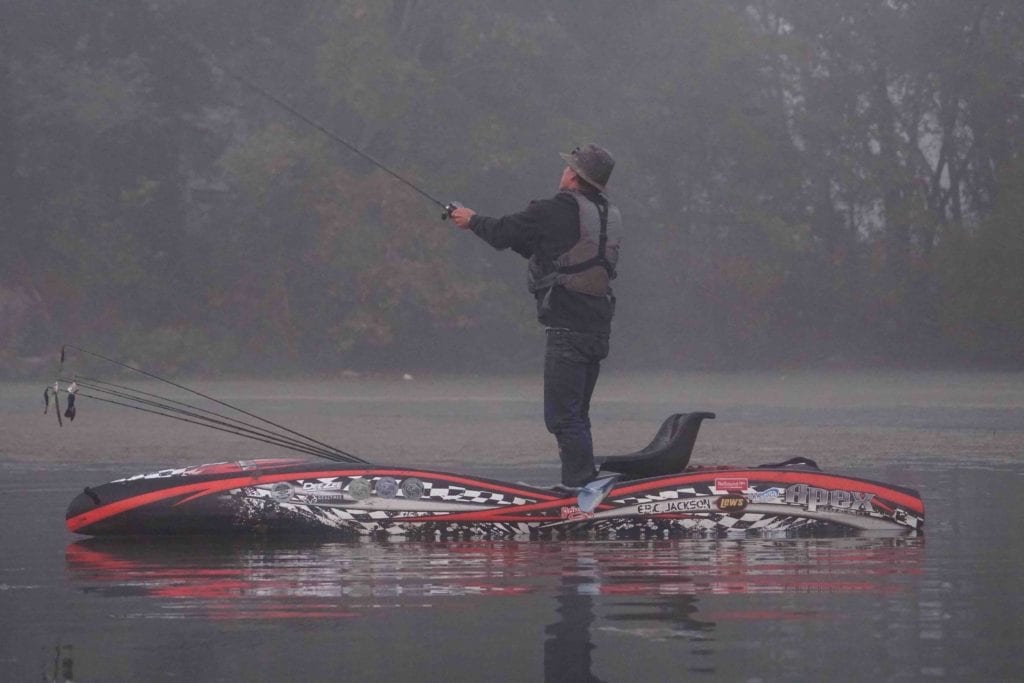
On Lake Guntersville EJ search for unpressured water took him so far up that there was only one boat seen in 3 days of fishing and that was close by the boat launch area. Otherwise once EJ started paddling through the aquatic vegetation no other angler dared to go he was going. Plus it wasn’t just aquatic vegetation that EJ was paddling through as I followed him through 2- to 3-inch deep water often pulling ourselves with the paddles through a muddy bottom in that shallow of water. Not something I would normally do, however, the Apex Watercraft Tyr can slide through even the skinniest of water since it only weights around 40 pounds with a specially design hull and material construction.

“I don’t know how many times over the years, I have following big, aggressive bass in unpressured water. Now, I can even get into skinnier water yet to fish and it’s been rewarding in several of the kayak bass tournaments I have been in and even in by bass boat in tournaments. It just goes to show you that searching out and finding unpressured areas is worth the time and effort,” said EJ.
